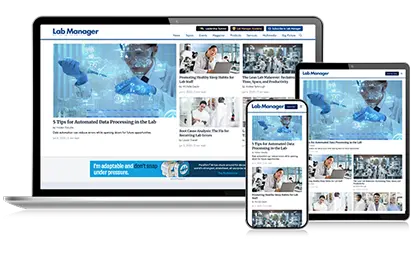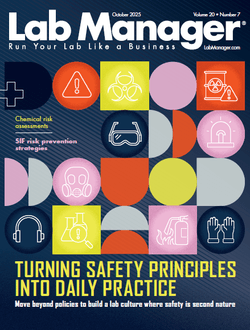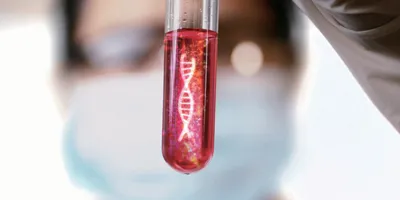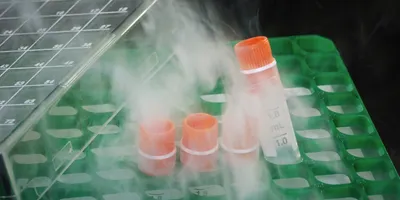Innovative Calibration Gas Mixtures Enable New Environmental Testing and Analysis Technologies
A burgeoning world population and the industrialization necessary to meet its needs have led to massive technological advances in all facets of human existence— among them, food and textile production, the manufacturing of modern home wares and furnishings, and advancements in medicine, infrastructure and transport. While bringing considerable benefits, these advances have sometimes had a negative impact on the environment.
Some chemicals hailed as scientific breakthroughs that would assist in the advancement of society have proved, in time, actually to be environmentally destructive. Chlorofluorocarbons (CFCs) are a prime example. First discovered in the 1920s, CFCs were the “perfect” solution for cooling refrigerators and air conditioners. They were easily turned into liquid at room temperature with application of just a small amount of pressure, and they could just as easily be turned back into gas. At that time considered safe and inexpensive—even eco-friendly—CFCs were also known to be completely inert and nontoxic to humans. They became ideal solvents for industrial solutions and hospital sterilants and could also be used to blow liquid plastic into various kinds of foams.
But in the 1970s scientists studying the decomposition of CFCs in the atmosphere were appalled to discover that catalyzing CFCs had begun to destroy the earth’s ozone layer.
The environmental impact of CFCs and related compounds led to the Montreal Protocol in 1987, signed by many nations that pledged to reduce CFC production. But with the phaseout of CFCs, industry was left with a need for a similar compound. CFCs were subsequently replaced by hydrochlorofluorocarbons (HCFCs) and hydrofluorocarbons (HFCs), which were later also found to destroy the ozone layer and/or contribute to an unnatural warming of the planet’s climate.
There are many other examples of chemicals, such as some pesticides, dyes and detergents, being developed with the best of intentions and later found to be environmentally harmful.
Damaging at low levels
Once a chemical is found to be potentially hazardous, it is critical to determine at what level it is harmful, so it can be controlled or eliminated. Many contemporary chemicals are damaging at very low levels—down to subparts per billion—and accurate, reliable methods and equipment are required to measure them once they have been released into the environment. Consequently, there also have been quantum leaps in the science of environmental testing and analysis.
The requirements for reducing environmental pollutants have been evolving rapidly, and today industries emitting pollutants must comply with rigid limits. They are also required—at regional, national and international levels—to provide regular and current data on air emissions and soil and water contaminants to a variety of agencies in order to comply with legislative or regulatory formats and reporting systems. For industry, this means that using more pollutants requires monitoring of a greater number of emission sources, bringing with it the requirement to measure pollutants at progressively lower levels with greater accuracy.
These developments have made reliability in measurement calibration absolutely critical. The demand for stable, accurate measurement is the cornerstone of emissions analysis, and there is an increasing need for reliable and sensitive techniques for testing the effects of the growing number of pollutants being released into the atmosphere.
Environmental toxicology highlights the potential effects upon organisms of compounds released into the natural environment. Using the latest technology in analytical instrumentation, scientists can analyze air, water and soil samples for the characterization and assessment of an extensive range of harmful contaminants, including volatile organic compounds (VOCs), metals, petroleum-based compounds, pesticide and herbicide residues, and detergents, among others.
Sound analytical protocols are at the heart of work taking place at laboratories every day, and in environmental analysis and testing, a range of sophisticated instruments and next-generation gas chromatography and mass spectrometry techniques play a vital role in the identification and qualification of environmental pollutants. Both techniques and equipment require highquality specialty gases for instrument operation and/ or calibration, in addition to dedicated high-purity gas distribution systems. As the reliability of analysis is only as good as the quality of the gas being used, distribution systems and equipment for high-purity and specialty gas mixtures must be able to meet increasing demands for high standards of performance and new analytical methods. Impurities occurring in as low concentrations as parts per trillion (ppt) can have serious consequences.
Pollutants can be extracted from soil and ground water or collected as free-floating samples on top of ground water. Advanced techniques go beyond merely identifying pollutants and are even able to age contaminants in soil and identify their source.
 For soil, gas and water, environmental analysis, monitoring and testing are done in the ambient environment where human development exists—where we plant our crops, source and drink water, and breathe the air. This has resulted in testing stations being set up near roads and highways, on the top of tower blocks, and in fields and oceans. This testing is often sponsored by governments and national agencies and conducted by them or on their behalf by universities or commercial contract laboratories.
For soil, gas and water, environmental analysis, monitoring and testing are done in the ambient environment where human development exists—where we plant our crops, source and drink water, and breathe the air. This has resulted in testing stations being set up near roads and highways, on the top of tower blocks, and in fields and oceans. This testing is often sponsored by governments and national agencies and conducted by them or on their behalf by universities or commercial contract laboratories.
For gas and water, environmental analysis and testing are also carried out at the point of emission—by the industrial concern at the emission source or factory perimeter—to control and monitor what is being discharged into the environment. There is an increasing trend to undertake measurement and analysis and to locate instruments where the potential contamination sample might be created.
Analysis can be facilitated via either a distributed or a “remote” lab near the point of emission, or can even be situated directly in the process causing the emission, essentially “taking the lab to the product” rather than analyzing the product in the lab. Analysts are beginning to favor this “closer is quicker” approach, because it allows less opportunity for the integrity of the sample to be compromised or degraded. To this end, more industrial concerns are undertaking their sampling in situ, analyzing the sample in real time and feeding the results to an online central database.
Gases and their role in metrology and environmental protection
The gas industry plays a vital role in the metrological chain, producing several patterns that are used in the calibration and verification of instruments and equipment.
With increasing regulatory requirements, more rigorous demands in measurement and even new contaminants to monitor, laboratories performing environmental analysis to detect and monitor our air quality are being constantly confronted with change and are under continuous pressure to expand their scope and expertise. Innovative, next-generation calibration gas mixtures are essential to enable new air-quality analysis technologies and to meet the needs of laboratory researchers.
Both high-purity gases for conducting daily measurements in soil, water and atmospheric phases and calibration gas mixtures that ensure optimal functionality of measurement instrumentation have become increasingly sophisticated in order to identify and quantify ever-more-minute levels of potentially harmful contaminants in the environment.
“In producing calibration gas mixtures, the most reliable reference materials from international entities like NIST (National Institute of Standards and Technology, U.S.), the VSL (Van Swinden Laboratorium, formerly NMi, Netherlands) and the NPL (National Physical Laboratory, U.K.) should be used to ensure [that] users can conduct their environmental measurement in line with international standards,” says Stephen Mandel, head of Environmental and Calibration Products, Linde Gas North America. “Calibration should take place using high-quality, traceable standards and the same phase as the measurement,” continues Mandel. “So if you’re measuring the ambient environment, you should be calibrating the instrument with a specialty gas standard.”
Specialty gases innovation to support environmental analysis
 To keep pace with technological advances and increasingly stringent legislative requirements, some modern calibration gas mixtures use state-of-the- art packaging technology with proprietary cylinder treatment processes that exceed the increasingly demanding requirements for consistency and stability in a wide variety of calibration standards—down to parts-per-billion levels. Offering long-term stability for binary calibration gas mixtures that require low-level carbon monoxide, carbonyl sulfide, methyl mercaptan, hydrogen sulfide, nitric oxide, nitrogen dioxide or sulfur dioxide can provide greater confidence to laboratories, as these components are among the most frequently analyzed and controlled substances in the atmosphere around us.
To keep pace with technological advances and increasingly stringent legislative requirements, some modern calibration gas mixtures use state-of-the- art packaging technology with proprietary cylinder treatment processes that exceed the increasingly demanding requirements for consistency and stability in a wide variety of calibration standards—down to parts-per-billion levels. Offering long-term stability for binary calibration gas mixtures that require low-level carbon monoxide, carbonyl sulfide, methyl mercaptan, hydrogen sulfide, nitric oxide, nitrogen dioxide or sulfur dioxide can provide greater confidence to laboratories, as these components are among the most frequently analyzed and controlled substances in the atmosphere around us.
A further development in emissions monitoring and detection has been the miniaturization of emissions monitoring devices, which are often dispersed across remote locations. These instruments demand smaller, highly portable gas calibration solutions. A limited range of compact, lightweight, refillable gas cylinders not only meet the challenge of calibrating distributed devices, but are significantly more environmentally friendly than disposable cylinders traditionally used for this specific application.
In many applications, continuous emission monitoring is required to collect and analyze at least one sample every fifteen minutes from industrial processes. High-purity gases for such analysis of air emissions are vital for this purpose, as are custom standards for head space analysis of water and soil samples.
Traceability for measurement certainty
“Traceability has become a key environmental issue,” says Stephen Harrison, global head of Specialty Gases and Specialty Equipment, Linde Gas. “With environmental emission monitoring or emission trading, authorities demand traceability to help ensure that public safety requirements are met.
“Traceability is the relationship between a measured value and an established element of a national [or] international measurement system. For traceability to exist there must be an unbroken chain of comparisons between the sample and an accredited measurement system. The measurement system by which values are transferred must be clearly understood and under control.
“Accreditation—an independent assessment of the competence of a laboratory to produce and/or certify samples or products—is an important aspect in the production of specialty gases. Manufacturers all over the world want to be assured that suppliers can deliver their products to the required quality [standard]. Specialty gases facilities should have received certification as a producer under ISO 9001, and [under] independently accredited programs such as ISO 17025:2005 as a testing and/or calibrating laboratory, and [under] ISO Guide 34 as a standards producer, which provides the highest level of quality assurance and allows the gas producer to confidently state that the methods used to certify [its] accredited calibration gas mixtures are accurate, consistent, documented and validated,” Harrison adds.
Innovative Calibration Gas Mixtures Enable New Environmental Testing and Analysis Technologies
A burgeoning world population and the industrialization necessary to meet its needs have led to massive technological advances in all facets of human existence— among them, food and textile production, the manufacturing of modern home wares and furnishings, and advancements in medicine, infrastructure and transport. While bringing considerable benefits, these advances have sometimes had a negative impact on the environment.
Some chemicals hailed as scientific breakthroughs that would assist in the advancement of society have proved, in time, actually to be environmentally destructive. Chlorofluorocarbons (CFCs) are a prime example. First discovered in the 1920s, CFCs were the “perfect” solution for cooling refrigerators and air conditioners. They were easily turned into liquid at room temperature with application of just a small amount of pressure, and they could just as easily be turned back into gas. At that time considered safe and inexpensive—even eco-friendly—CFCs were also known to be completely inert and nontoxic to humans. They became ideal solvents for industrial solutions and hospital sterilants and could also be used to blow liquid plastic into various kinds of foams.
But in the 1970s scientists studying the decomposition of CFCs in the atmosphere were appalled to discover that catalyzing CFCs had begun to destroy the earth’s ozone layer.
The environmental impact of CFCs and related compounds led to the Montreal Protocol in 1987, signed by many nations that pledged to reduce CFC production. But with the phaseout of CFCs, industry was left with a need for a similar compound. CFCs were subsequently replaced by hydrochlorofluorocarbons (HCFCs) and hydrofluorocarbons (HFCs), which were later also found to destroy the ozone layer and/or contribute to an unnatural warming of the planet’s climate.
There are many other examples of chemicals, such as some pesticides, dyes and detergents, being developed with the best of intentions and later found to be environmentally harmful.
Damaging at low levels
To continue reading this article, sign up for FREE to

Membership is FREE and provides you with instant access to eNewsletters, digital publications, article archives, and more.


 For soil, gas and water, environmental analysis, monitoring and testing are done in the ambient environment where human development exists—where we plant our crops, source and drink water, and breathe the air. This has resulted in testing stations being set up near roads and highways, on the top of tower blocks, and in fields and oceans. This testing is often sponsored by governments and national agencies and conducted by them or on their behalf by universities or commercial contract laboratories.
For soil, gas and water, environmental analysis, monitoring and testing are done in the ambient environment where human development exists—where we plant our crops, source and drink water, and breathe the air. This has resulted in testing stations being set up near roads and highways, on the top of tower blocks, and in fields and oceans. This testing is often sponsored by governments and national agencies and conducted by them or on their behalf by universities or commercial contract laboratories. To keep pace with technological advances and increasingly stringent legislative requirements, some modern calibration gas mixtures use state-of-the- art packaging technology with proprietary cylinder treatment processes that exceed the increasingly demanding requirements for consistency and stability in a wide variety of calibration standards—down to parts-per-billion levels. Offering long-term stability for binary calibration gas mixtures that require low-level carbon monoxide, carbonyl sulfide, methyl mercaptan, hydrogen sulfide, nitric oxide, nitrogen dioxide or sulfur dioxide can provide greater confidence to laboratories, as these components are among the most frequently analyzed and controlled substances in the atmosphere around us.
To keep pace with technological advances and increasingly stringent legislative requirements, some modern calibration gas mixtures use state-of-the- art packaging technology with proprietary cylinder treatment processes that exceed the increasingly demanding requirements for consistency and stability in a wide variety of calibration standards—down to parts-per-billion levels. Offering long-term stability for binary calibration gas mixtures that require low-level carbon monoxide, carbonyl sulfide, methyl mercaptan, hydrogen sulfide, nitric oxide, nitrogen dioxide or sulfur dioxide can provide greater confidence to laboratories, as these components are among the most frequently analyzed and controlled substances in the atmosphere around us.







